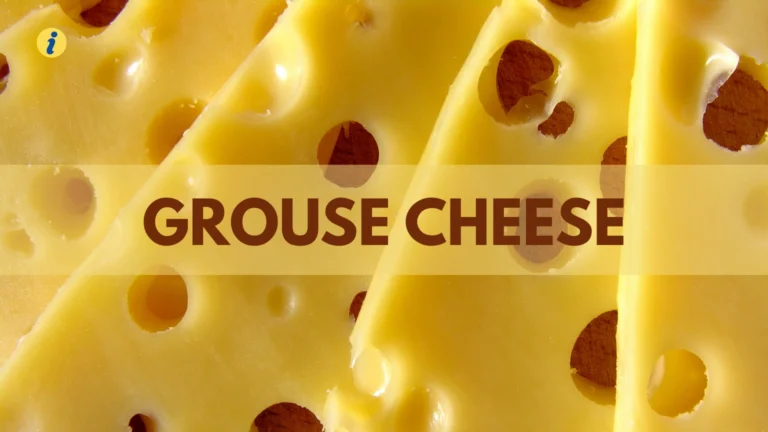Old Fashioned Vegetable Beef Soup Recipe
Old fashioned vegetable beef soup recipe is a traditional dish prepared with beef, fresh vegetables, broth, and herbs. The recipe is known for its nutritional richness, slow cooking process, and deep flavor. Families across North America and Europe often prepare it during cold weather for warmth and comfort. Historical cookbooks from the 19th century describe this soup as a staple for households because it uses inexpensive beef cuts and seasonal vegetables. The dish combines lean protein from beef with vitamins, minerals, and fiber from vegetables. The broth acts as the base, absorbing flavor from bones, marrow, and herbs.

What is Old Fashioned Vegetable Beef Soup Recipe?
Old fashioned vegetable beef soup is a slow-cooked dish made with beef, carrots, potatoes, celery, tomatoes, onions, garlic, peas, corn, and broth. The beef is usually browned first to enhance flavor before simmering with vegetables. The soup is hearty, filling, and served hot. The cooking method involves simmering ingredients over low heat for several hours. This process allows flavors to meld while tenderizing the beef. The recipe is versatile and allows substitutions based on available vegetables or spices.
Ingredients in Old Fashioned Vegetable Beef Soup:
Core Ingredients:
-
Beef chuck, stew meat, or beef shank
-
Carrots, celery, and onions
-
Potatoes, corn, peas, and green beans
-
Tomatoes (fresh or canned)
-
Garlic cloves
-
Beef broth or stock
-
Salt, pepper, and bay leaves
Optional Additions:
-
Cabbage for additional fiber
-
Barley for thickness
-
Turnips or parsnips for sweetness
-
Fresh parsley for garnish
-
Worcestershire sauce for depth
Ingredient Attributes:
-
Beef chuck contains marbling that enhances richness.
-
Carrots supply beta carotene and sweetness.
-
Potatoes absorb broth and provide starch.
-
Celery delivers aromatic notes.
-
Tomatoes balance acidity with natural sugars.
-
Garlic adds pungency and antimicrobial benefits.
How to Cook Old Fashioned Vegetable Beef Soup:
To cook old fashioned vegetable beef soup, follow these steps:
-
Brown the beef – Heat oil in a Dutch oven. Add beef chunks. Brown on all sides for a caramelized crust.
-
Add aromatics – Stir in onions, celery, and garlic. Cook until fragrant.
-
Deglaze the pot – Pour a small amount of broth or tomatoes to loosen browned bits.
-
Simmer the base – Add beef broth, tomatoes, and bay leaves. Bring to a boil, then reduce to low heat.
-
Add root vegetables – Stir in carrots and potatoes. Simmer for 1–2 hours until beef softens.
-
Add quick-cooking vegetables – Stir in peas, corn, and green beans near the end. Cook for 15–20 minutes.
-
Season and serve – Remove bay leaves. Adjust salt and pepper. Serve hot with bread.
Cooking Methods:
Stovetop Method:
Cooking on the stovetop allows steady simmering. A heavy-bottomed pot retains heat and prevents burning. The method requires occasional stirring and skimming of fat.
Slow Cooker Method:
Using a slow cooker extends cooking time to 6–8 hours. This method ensures tenderness without constant supervision. Ingredients are layered, with beef placed first, then vegetables, and broth added last.
Pressure Cooker Method:
Cooking in a pressure cooker reduces time to 35–45 minutes. The sealed environment builds pressure, softening beef quickly. Vegetables are added later to prevent overcooking.
Nutritional Value of Old Fashioned Vegetable Beef Soup:
Old fashioned vegetable beef soup provides balanced nutrition.
| Nutrient | Value (per 2-cup serving) | Source |
|---|---|---|
| Calories | 280–320 kcal | USDA Beef & Vegetable Data |
| Protein | 22–25 g | Beef, peas |
| Carbohydrates | 24–28 g | Potatoes, carrots, corn |
| Fiber | 5–7 g | Vegetables |
| Fat | 10–12 g | Beef and broth |
| Vitamin A | 80–100% DV | Carrots |
| Vitamin C | 30–35% DV | Tomatoes, potatoes |
| Iron | 15–18% DV | Beef |
| Potassium | 800–1000 mg | Potatoes, tomatoes |
The soup delivers a high protein-to-calorie ratio, making it suitable for energy recovery and balanced diets.
Historical Background:
Vegetable beef soup has roots in European peasant cooking. Farmers combined beef bones, root vegetables, and herbs to create nutrient-dense meals. Immigrants brought variations to North America during the 1800s. In the United States, pioneer families cooked large batches over open fires. Depression-era cookbooks list vegetable beef soup as a frugal dish. The recipe has since evolved but retains its traditional character.
Variations of Old Fashioned Vegetable Beef Soup:
Regional Variations:
-
American South: Often includes okra and collard greens.
-
Midwest: Adds barley and turnips.
-
New England: Uses cabbage and parsnips.
-
Italian-style: Includes cannellini beans and oregano.
-
Mexican-style: Adds chili peppers, cilantro, and lime.
Dietary Variations:
-
Low-carb version: Replaces potatoes with zucchini.
-
Gluten-free version: Excludes barley.
-
Vegetarian version: Uses mushrooms instead of beef.
-
Low-sodium version: Uses unsalted broth and herbs.
Serving Suggestions:
Serve vegetable beef soup with crusty bread, cornbread, or crackers. Pair with a light salad for balance. Garnish with parsley or green onions for freshness. A side of pickles or fermented vegetables adds acidity to balance richness.
Storage and Reheating:
Store soup in airtight containers. Refrigerate for up to 4 days. Freeze for 3 months. To reheat, thaw overnight and simmer on the stove. Avoid overcooking vegetables during reheating to maintain texture.
Common Mistakes in Cooking Vegetable Beef Soup:
-
Overcooking vegetables causes mushiness.
-
Skipping beef browning reduces flavor depth.
-
Adding all vegetables at once results in uneven texture.
-
Using too much salt early makes broth concentrated.
-
Failing to skim fat leads to greasy texture.
Health Benefits of Old Fashioned Vegetable Beef Soup:
-
Supports muscle repair through high protein content.
-
Boosts immune function with vitamins A and C.
-
Improves digestion due to dietary fiber.
-
Promotes hydration through broth-based liquid.
-
Provides iron for blood health.
-
Offers antioxidant compounds from vegetables.
Expert Tips for the Best Results:
-
Select beef with marbling for tenderness.
-
Cut vegetables in uniform sizes for even cooking.
-
Layer seasoning gradually to balance flavor.
-
Use fresh herbs at the end for brightness.
-
Allow soup to rest before serving for deeper flavor.
Learn More: Euphoniums Brass Instruments: The Complete 2025 Guide
Conclusion:
Old fashioned vegetable beef soup remains one of the most respected heritage recipes. Its balance of beef, vegetables, and broth delivers nutrition and comfort. The recipe adapts across cultures and remains a staple in American households. Historical roots, nutritional value, and versatility make it a timeless dish. Families continue to prepare it for gatherings, reinforcing tradition with each pot served.






